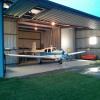Temporary Rough Engine At Cruise
-
Members Online
- IvanP
- EKoS
- Igor_U
- 65MooneyPilot
- Nico1
- Schllc
- eman1200
- Alangj
- Planegary
- Rick Junkin
- Grumpy
- GeeBee
- Fly Boomer
- MikeOH
- Mooney in Oz
- noandrewhere
- EricJ
- rbmaze
- TCC
- KSMooniac
- 1980Mooney
- Papogator24
- Matthew P
- wingslevel
- Crawfish
- WilliamR
- Stealth Mooney
- Jedei120
- Wingover
- GMBrown
- Guillaume
- dzeleski
- catchman86
- banjo
- Robm
- MattD89
- Brian2034
- Fritz1
- Ski968
- jetdriven
- redbaron1982
- Flyler
- sheriffburrell
- Dick Denenny
- NickG
- Bolter
- ArtVandelay
- The Captain


Recommended Posts
Join the conversation
You can post now and register later. If you have an account, sign in now to post with your account.